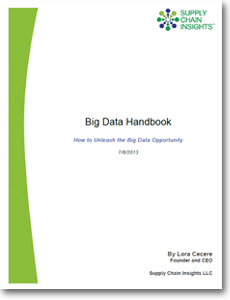Big Data Handbook
How to Unleash the Big Data Opportunity - Big data is more of an opportunity than a problem. Companies need to mobilize now to build new processes and differentiated services.
Executive Overview
The use of new forms of data is not an evolution. Instead, powering big data supply chains, and innovating through new forms of analytics, is a step change.
New forms of data do not fit traditional architectures. Traditional supply chains were architected to use structured data with software using relational databases. The big data era will make many of the investments from the last decade obsolete.
Big data offers the opportunity to redefine supply chain processes from the outside-in (from the channel back) and define the customer-centric supply chain. This is in stark contrast to the inflexible IT investments installed over the last decade to respond inside-out based on order shipments.
These traditional investments in Enterprise Resource Planning (ERP), Advanced Planning Systems (APS) and traditional Business Intelligence (BI) for reporting, improved the supply chain response, but did not allow the organization to sense, shape or orchestrate outside-in.
New forms of data (e.g., images, social data, sensor transmission, input from global positioning systems (GPS), the Internet of Things, and unstructured text from email, blogs and ratings and reviews) offer new opportunities. They also require new techniques and technologies.
Big data offers new opportunities for the corporation to listen, test and learn, and respond faster. In this study, companies see the greatest opportunity to use big data for “demand” (to better know the customer and improve the response); however, actual investments are in “supply” not “demand.”
Respondents view supply-centric projects like product traceability (involving product serialization and traceability), supply chain visibility and temperature controlled handling as important.
- Objective: To understand how supply chain leaders are building capabilities to harness big data.
- Highlight: Big data is more of an opportunity than a problem: 76% consider it an opportunity, 28% already have a big data initiative in place and another 37% plan to. The possibilities of big data are endless. It starts with thinking about how to use different data in a differentiated way.
- Survey Details: The research for this report was conducted from May – June, 2013. It is based on an online survey among 123 manufacturers, retailers, wholesalers/distributors/co-operatives and 3PL (third-party logistics) providers who are at least a little familiar with big data.
Is big data a problem or a new market opportunity?

Take the latest Big Data Survey
For your participation in this survey, Lora Cecere, Supply Chain Insights Founder & CEO, will provide a free one hour consultative call with you and your organization to review the results and discuss your own talent strategies.
Take Your Big Data Survey
What’s Related
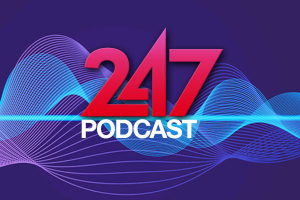
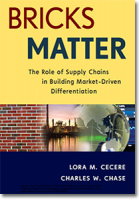
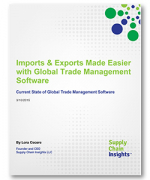
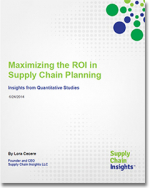
Favorites





